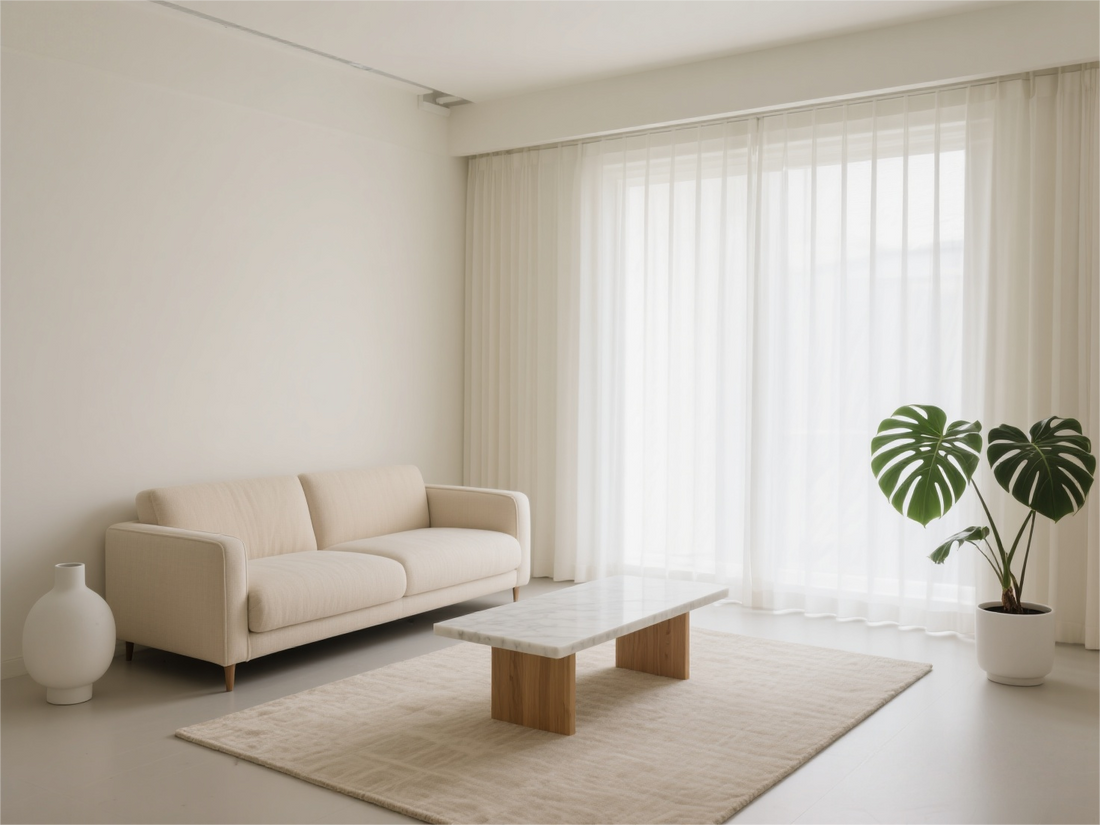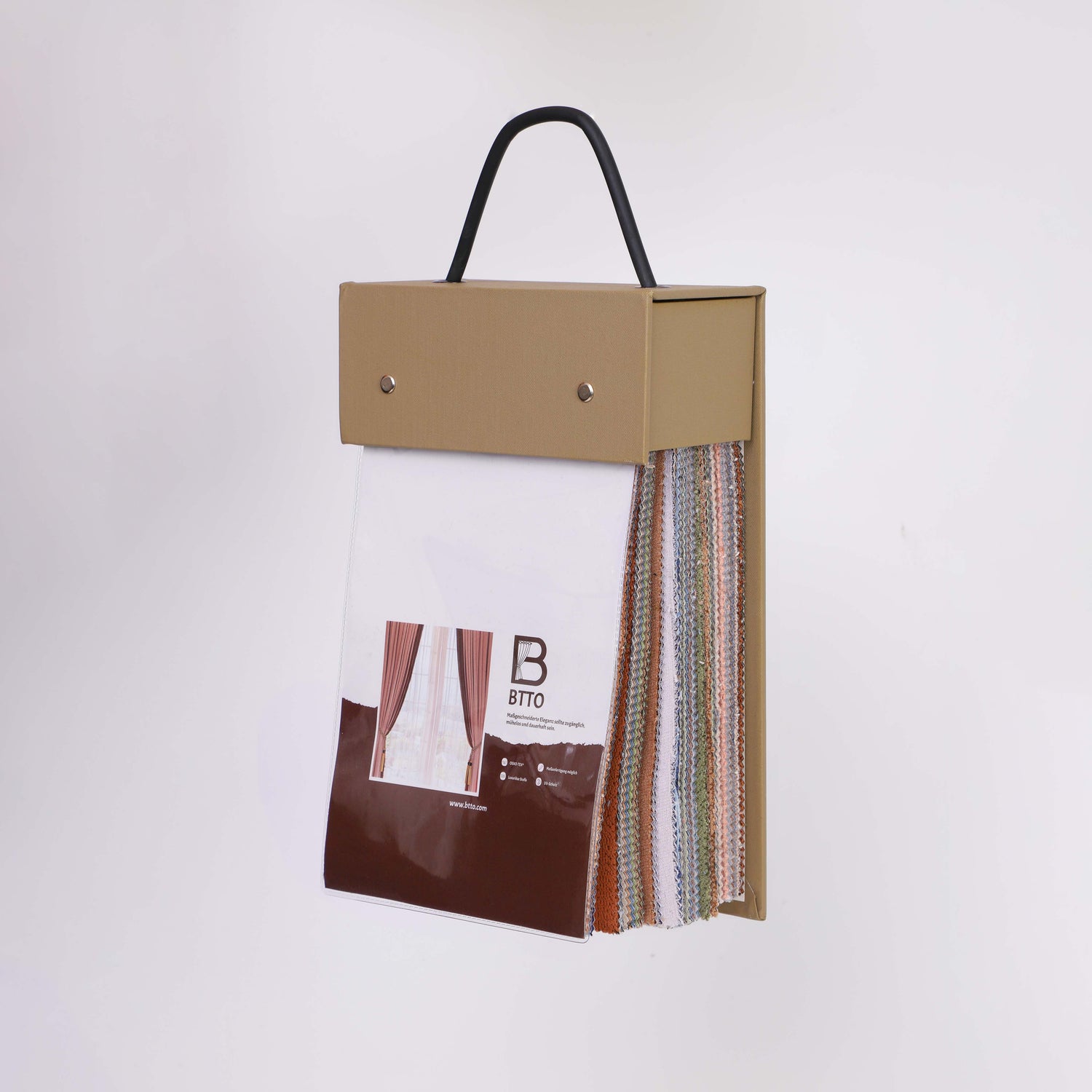
Make small rooms appear large: Curtains as space miracles
Fewer square meters – more impact: With cleverly planned curtains, small rooms appear taller, wider, and calmer. Installation, color, fabric, and clean lines are crucial.

Mounting tricks: Gain height & width
- Mount high to the ceiling: Place the rail as close to the ceiling as possible – the view is drawn upwards and the room appears higher.
- Plan extra wide: Extend curtains 15–25 cm beyond the sides of the window. This way, the fabric conceals the gap between the walls and makes the window appear larger.
- Think wall-to-wall: A continuous curtain panel across the entire window wall acts as a calm, architectural background.
- Connecting doors and windows: In one-room apartments, a continuous curtain can visually connect the openings into one surface – reducing the number of “cuts” in the room.
- Concealed tracks: Mounted flush with the ceiling or with a cover – clear edges, no visual interruptions.

Choice of color and fabric: light, tranquility, spaciousness
- Light, matte neutrals: Off-white, sand, and greige reflect light without glare—ideal in voile/inbetween or fine linen looks.
- Tonality instead of contrast: Curtain color close to the wall and ceiling color keeps the room “of one piece.”
- Soft drape: Light to medium densities with a calm wave pattern appear generous and orderly.
- Dim-out can be added specifically: For evening peace and quiet, dim-out/blackout outer layers – during the day the room remains pleasant with voile.
Patterns & Verticals: Stretch Instead of Disturb
Fine, vertical structures extend the spatial effect and organize the light.
- Vertical texture: Delicate stripes, herringbone or ribbed structures stretch the height.
- Calm wave band: Even wave folds appear more modern than harsh breaks.
- Avoid shine: Matte surfaces reduce visual clutter – especially in small floor plans.

Layering & Zones: flexible in a small floor plan
- Light by day, cozy by night: voile inside for spaciousness, dim-out outside for privacy and sleep.
- Separate zones: A curtain as a room divider (e.g. sleeping alcove) creates structure without losing space due to walls.
- Tidying up trick: Niches or shelves can be hidden behind a calm curtain – the overall effect becomes more spacious.
Fine details, big impact
- Ground clearance: Slight “kiss” (just above ground level) in walkways; small “break” (2–3 cm) in quiet zones.
- Continuous panels: It is better to have a few wide panels instead of many narrow ones – fewer vertical cuts.
- Matte hardware: Brushed metal or painted – no shiny distractions.
Practical examples
Studio Apartment
Wall-width curtain panel in greige, with voile on the inside. Close off the sleeping alcove at night with the dim-out blinds; during the day, the curtains close tightly at the sides, leaving the room open.

Mini bedroom
Ceiling-high, light, dim-out curtains with a calm wave pattern. The headboard, curtain, and rug are tonally related, creating a cohesive effect.
Narrow hallway
Solve short trips: Cover the storage niche with fabric – fewer doors, more peace and quiet. A light, matte texture for light transmission.
Measuring & Assembly Quick Guide
- Width: window opening + 30–50 cm; for wall-to-wall: measure the entire wall width.
- Height: ceiling to floor; kiss in walkways, small break in quiet zones.
- Rail: Ceiling height (ideally concealed); provide double track for layering.
- Fold allowance: approx. 2.0–2.3 times for a smooth wave pattern.
- Color/Material: Tone-on-tone with wall; matte, finely textured.
Avoid common mistakes
- Installation too low: the lower edge of the window lintel compresses the height – ceiling height is better.
- Planned too narrow: Without a side overhang, the window appears smaller and gaps in the light are created.
- Hard contrast: Strongly different curtain colors divide small rooms – tone-on-tone is calming.
- Too many panels: Many narrow panels create visual clutter – plan wider.
Checklist: Your space-saving window
- [ ] Ceiling height, extra wide sides
- [ ] Tone-on-tone: Curtain to wall & ceiling
- [ ] Matte, light fabrics; fine vertical structure
- [ ] Layering: Voile during the day, dim-out in the evening
- [ ] Few, wide lanes; calm wave pattern
- [ ] Room divider/storage curtain as required

